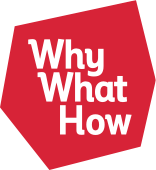When developing your strategy, speed has benefits, but some serious downside as well.
Mmmmm! The aroma of coffee and muffins to start.
Maybe a glass or two of wine to celebrate at the end.
And, in between, five or six hours of facilitated thinking, debating and compromising to arrive at your organisation’s new strategic plan.
Job done for the next three years!
Sound familiar?
It’s certainly a common approach to organisational strategy for numerous not-for-profit organisations, and quite a few commercial businesses as well.
I like to call this approach ‘fast strategy.’
And, like fast food, it does arguably have some definite benefits:
- It’s certainly quick.
- It’s usually cheap.
- It satisfies a base need.
- And it allows you to move on immediately to other, more ‘important’ matters.
But, also like fast food, fast strategy has its limitations:
- It delivers a quick energy hit, but can soon leave you feeling sluggish.
- It looks like it will sustain you (or your organisation) but actually can do more harm than good.
- And it can be addictive – when you’re feeling hungry for more strategic guidance, which you soon will be, there’s the temptation to just dial up another fast strategy.
Yet, as some wise person once said: “Everything in moderation!” And this is true of fast food, and fast strategy.
So, what if you really need to get your strategy ‘sorted’ in a day, or less?
Then, you’ll probably need to accept that:
- The ‘strategy’ you produce will be a simple, small set of 3-6 things(initiatives or projects) you want to happen within the planning time-frame (usually 1, 2 or 3 years);
- Fundamentals, like mission, vision and values, can’t really be addressed;
- Generally, only the people in the room on the day will have input – everyone else will simply be informed of the outcome;
- Decisions will need to be made and agreements reached very quickly, withlittle opportunity for reflection or review;
- Your ‘facilitator’ or consultant may have a disproportionate influenceover the content of the strategy that is produced;
- Your strategy will be more of an ‘action plan’ than a ‘guiding light’ for ongoing innovation and decision-making; and
- Inevitably, your people will be disengaged, to some degree, from your strategic plan.
But is there a better way?
A more nutritious and sustainable approach to strategic planning recognises that effective strategy has layers and complexity – something from each of the food groups.
The first, and most basic layer is your purpose – the ‘why’ of your organisation.
Developing a clear, unambiguous purpose statement gives all your people a crystal clear understanding of what they should most basically be trying to do. ‘Eradicating cancer’ might be a worthy purpose, but it’s such a large ambition that it’s not really helpful. ‘Supporting the community to prevent skin cancer,’ for example, offers a much more precise and comprehensible sense of what you and your team are meant to be trying to achieve.
Next, you’ll need a small number of specific strategic objectives that will fulfil your purpose.
What specifically are you going to do to make your mission happen? To continue my example, you might establish objectives to: ‘educate the community about the causes of skin cancer,’ ‘sell products that help in preventing skin cancer,’ ‘offer diagnostic tests for early detection’ and ‘support relevant medical research.’
The final layer is about ‘how’ you’ll deliver these objectives – theinitiatives (or programs) you’ll implement.
For example, ‘educating the community’ might be delivered through a television advertising campaign, a schools-based program and a workplace ‘sun-smart’ program for outdoor workers.
Ultimately, your strategic plan won’t provide the organisational sustenance and health you want if either:
- one or more of these layers is missing altogether. Fast strategy is really just the initiatives or ‘how’ part, without the context of your ‘why’ and ‘what’ to guide your endeavours, or
- the layers are there, but not appropriately connected. If the initiatives or projects you identify through a fast strategy approach don’t deliver on specific objectives that fulfil your purpose, they’re like ‘empty calories’ – they might feel good, but they’re not actually helping and quite possibly hurting.
Of course, most NFP’s have limited time and resources, and the key stakeholders who will lead your strategic thinking are generally volunteers, often geographically distant from one another. Getting them together for more than a day can be a major challenge.
So, if you really can’t allocate more than a day for your strategy workshop?
You’ll need to ensure that you:
- engage meaningfully with a range of stakeholders over several monthsbefore the workshop, using surveys, short teleconferences, local focus groups and the like, to get diverse input and feedback on key strategic issues;
- analyse and package this pre-workshop data and provide it to workshop participants, well before the workshop day;
- establish a stakeholder reference group, comprising representatives of all key stakeholder types (board, members, staff, suppliers, customers or clients and the community, as relevant) and use them to generate issues and to validate proposals as they evolve;
- see the workshop output as a working draft, which should be subject to further review and refinement in the weeks afterwards;
- take time after the workshop to integrate your high level strategic outcomes and objectives into your operational plan, including relevant performance measures and targets.
So, by all means, enjoy the odd flirtation with fast strategy, but clearly understand that it can make your organisation a little bloated, sluggish and less energised than you’d want.
But if you want an agile, creative and healthy organisation, make the time for, and commitment to, a balanced strategic diet.
To discover more about the why, what and how of organisational strategy, please visit www.whywhathow.com.au.

